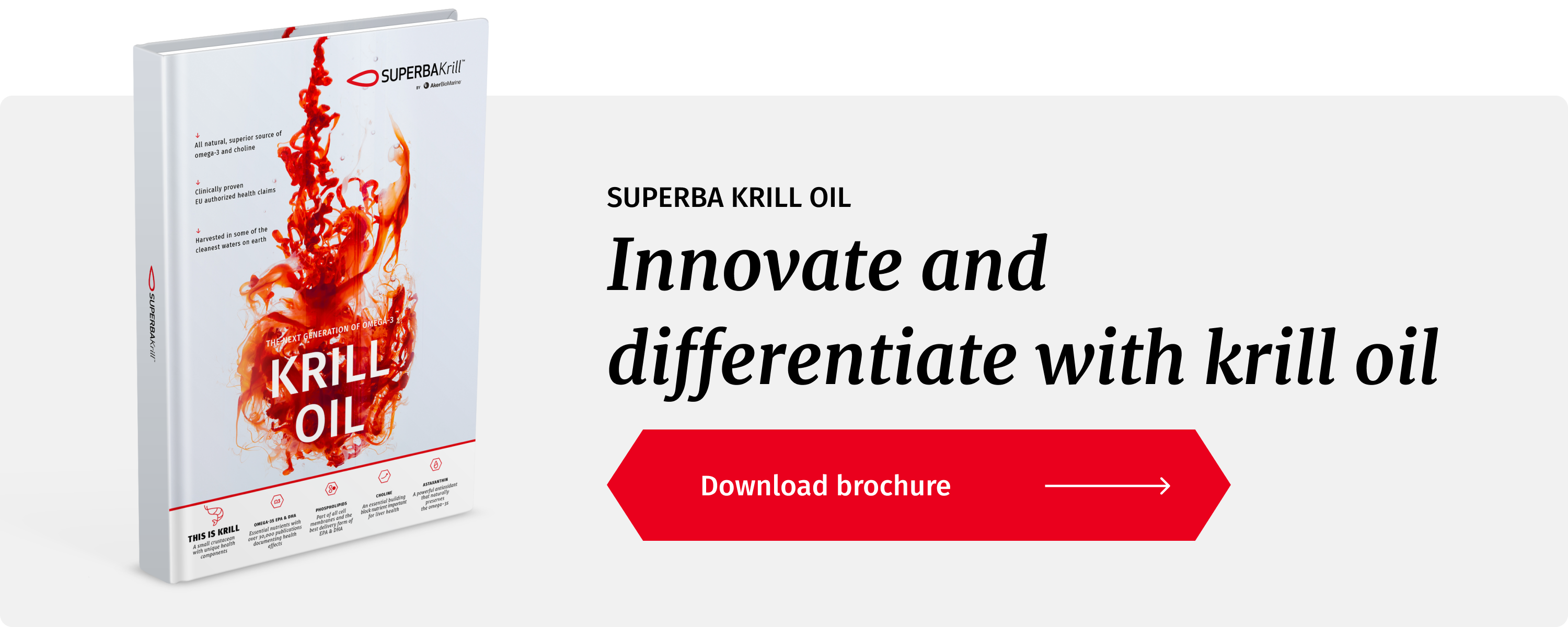Krill has long been referred to as one of the most plentiful biomasses in the world. It’s one of the key arguments in what makes krill a sustainable ingredient for aquafeeds, human nutrition products, and beyond. But what does the data say?
New science confirms big surplus of krill and a precautionary krill fishery in Antarctica
That’s exactly what the Norwegian Institute of Marine Research (IMR) aimed to uncover, way back in 2011. They wanted to go beyond assumption and rather, closely monitor the krill population over time to find out whether the biomass was truly as plentiful as speculated to be.
Now, more than 10 years later, the IMR has published a decade’s worth of data and made one strong conclusion as a result: the krill biomass is doing just fine. Ten years of monitoring data confirms big surplus of krill and a precautionary krill fishery in Antarctica. IMR’s extensive trawling and acoustic data, gathered from a 60,000 square kilometer area in Antarctic waters (area 48.2), reveals that this area is home to consistently high densities of krill, year-on-year. In 2000, the krill biomass was estimated to be around 60 million metric tons. In 2019, IMR scientists put that estimate at 63 million metric tons – a change that indicates that this species has not experienced any significant decline due to fishery activities.
%20copy.jpg?width=3000&height=2000&name=Krill_school_1_cred%20Aker%20BioMarine%20(1)%20copy.jpg)
In a world growing increasingly committed to sustainability, this is a solid position to be in. Our business at Aker BioMarine is built on this precious marine resource, and we are viscerally aware that with that comes great responsibility to protect it. Luckily, we are not alone in this sentiment.
Sustainability stems from a well-managed fishery
If we take a step back and reflect on how we got here – to have maintained a stable supply of krill and to be experiencing growth in our own production (up 9% year-on-year in Q2 2023) – then we must look at the bigger picture. We need to look at how this resource has been managed, not only by fisheries like ours, but by independent bodies as well.
The krill fishery is overseen by an organization called the Commission of Antarctic Marine Living Resources (CCAMLR). This is the body that determines the catch levels each year. They take a precautionary approach to krill, restricting harvesting to one area in the Antarctic; area 48 and also limiting fishing quota to just 1% of the biomass in that area.
It’s a drop in the bucket for this bountiful species, but it still yields a rather large supply of krill for commercial use each year, while leaving vast amounts in the ocean to both propagate the species and feed the local marine predators.

The Antarctic krill fishery is considered to be one of the most sustainable reduction fisheries today due to the precautionary harvesting limits and management. In 2022, a science paper, published in Fisheries Management and Ecology, concluded that the Antarctic krill fishery is the cleanest fishery in the world in terms of it’s extremely low bycatch rate.
As krill is the key species in the Antarctic ecosystem, regular monitoring is important, which is why we will continue to support up-to-date biomass estimations every year. It is in our industry's best interest to ensure that krill is well managed, says Pål Skogrand, VP Policy and Impact, Aker BioMarine.
A fully owned supply chain supports a steady and stable supply of krill
Monitoring and management is one part of the sustainability equation, but at Aker BioMarine, we also see the supply chain as another important aspect to ensuring a stable supply of krill. While the fish oil value chain in general is quite fragmented, with different owners and operators increasing the margins at each step, Aker BioMarine’s krill value chain is quite simple. We own it.

We believe that by maintaining control and transparency of the full value chain, from harvesting to production to final product, we can ensure a solid supply for our customers. This means that we take responsibility at each step, with the shared ambition across the value chain to secure continuity of supply.
It’s a point of pride for us that we are operating within one of the most sustainable fisheries in the world, now clearly proven thanks to IMR’s long-term dedication to monitoring the krill biomass. And as part of this pride, we believe that a sustainable approach to the value chain is only possible through our own control, oversight and by ensuring transparency throughout.
Fisheries must take responsibility for sustainability and supply
At Aker BioMarine, we remind ourselves every day that maintaining these levels won’t happen on its own. It takes the oversight of the CCALMR to hold fisheries accountable for their catch. It takes marine certification bodies, like the Marine Stewardship Council (MSC), to measure and rate how well the fisheries are maintaining their commitments and meeting their targets. And it takes actors like us, companies that aim to lead by example and take responsibility for their impact on the local environment.
A stable supply of krill is key to our customers, and at Aker BioMarine, we aim to ensure that krill continues to be the ingredient that can fill the nutritional gap for both humans and animals alike.


